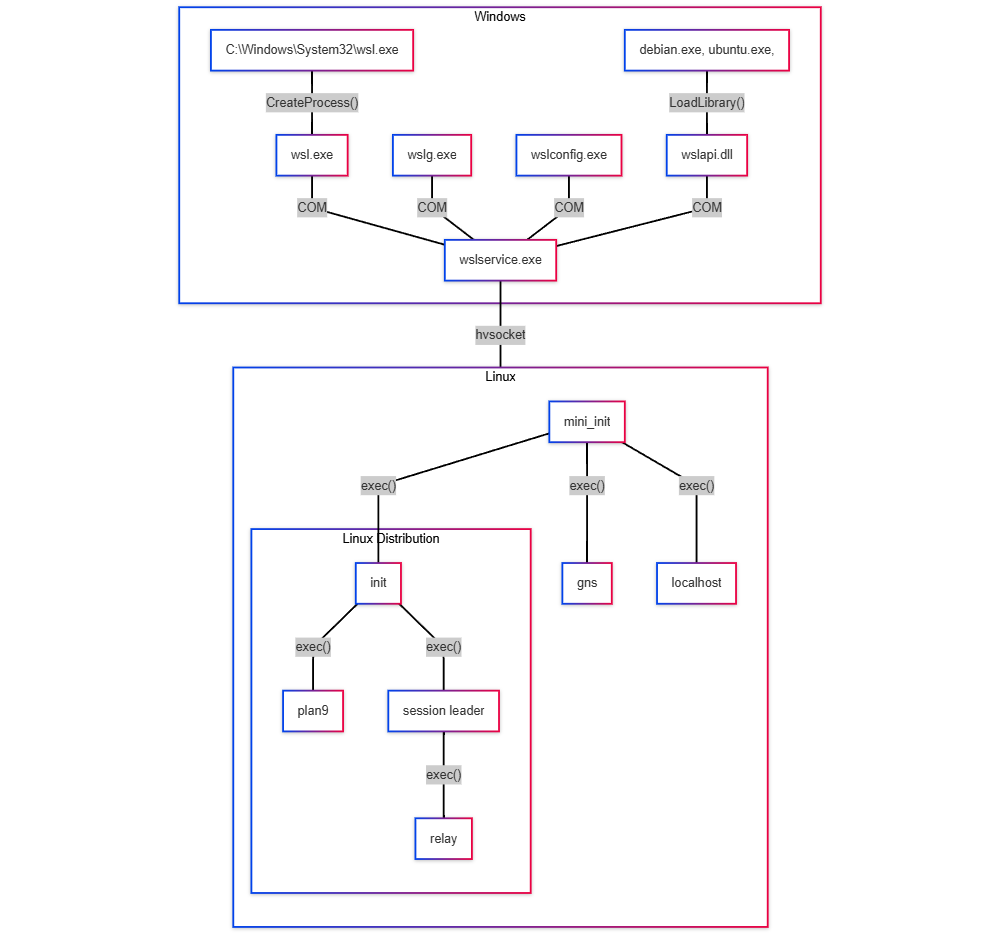Microsoft’s decision to open-source the Windows Subsystem for Linux (WSL) marks a significant shift toward transparency and community-driven development. Developers and tech enthusiasts can now access, examine, and contribute directly to the WSL codebase on GitHub, opening doors for innovation and shared progress.
Inside the WSL Architecture
WSL is composed of several integrated components that enable seamless interaction between Windows and Linux. Some essential parts function natively on Windows, while others operate within the WSL 2 virtual machine.
The main elements include:
- Command-line executables like wsl.exe, wslconfig.exe, and wslg.exe for user interaction
- The WSL service (wslservice.exe) managing VMs, distributions, and file sharing
- Linux init and daemon processes responsible for system startup, networking, and port forwarding inside the VM
- Plan9 server implementation facilitating file sharing between Linux and Windows
While these core components are now open source, some elements, such as the Lxcore.sys driver for WSL 1 and filesystem redirection tools, remain proprietary within Windows.

Head over to https://wsl.dev to learn more about each component.
Building on an Expanding Open Ecosystem
This move complements existing open-source projects like the WSLg project (which brings graphical Linux apps to Windows) and the WSL2 Linux Kernel. With the main WSL codebase now accessible, the ecosystem becomes even more transparent and attractive for developers eager to explore or contribute new features.
Tracing WSL’s Evolution
Introduced in 2016, WSL began as “WSL 1,” allowing Windows to run Linux binaries natively. To improve compatibility, Microsoft launched “WSL 2” in 2019, which uses a real Linux kernel via a lightweight VM. Key updates over the years, like GPU support, graphical app capabilities, and systemd integration, were driven by community feedback.
Microsoft further accelerated WSL’s development in 2021 by decoupling it from Windows and offering it as a standalone Microsoft Store package. This enabled faster updates and broader distribution. Recent improvements include advanced networking, DNS tunneling, and enhanced security tools.
Community at the Core
The WSL story is deeply intertwined with its community. Even before open sourcing, user feedback played a pivotal role in identifying bugs and shaping new features. With the code now on GitHub, community members can submit fixes, propose enhancements, and learn directly from a production-grade interoperability project.
Key Benefits for Developers
Open-sourcing WSL delivers several advantages:
- Transparency—developers can scrutinize and understand the inner workings of WSL
- Collaboration—anyone can propose new features or bug fixes
- Innovation—the community is empowered to experiment and create custom solutions
- Learning—students and professionals gain insight into a major interoperability project
Looking Ahead
Microsoft’s open-source release of WSL signals a strong commitment to user empowerment and collaborative progress. This move not only accelerates WSL development but also strengthens its role as an essential tool for developers working across Windows and Linux. If you’re interested in getting involved, explore the official GitHub repository and join the community shaping WSL’s future.
Source: Windows Developer Blog

Microsoft Opens Windows Subsystem for Linux: What It Means for Developers